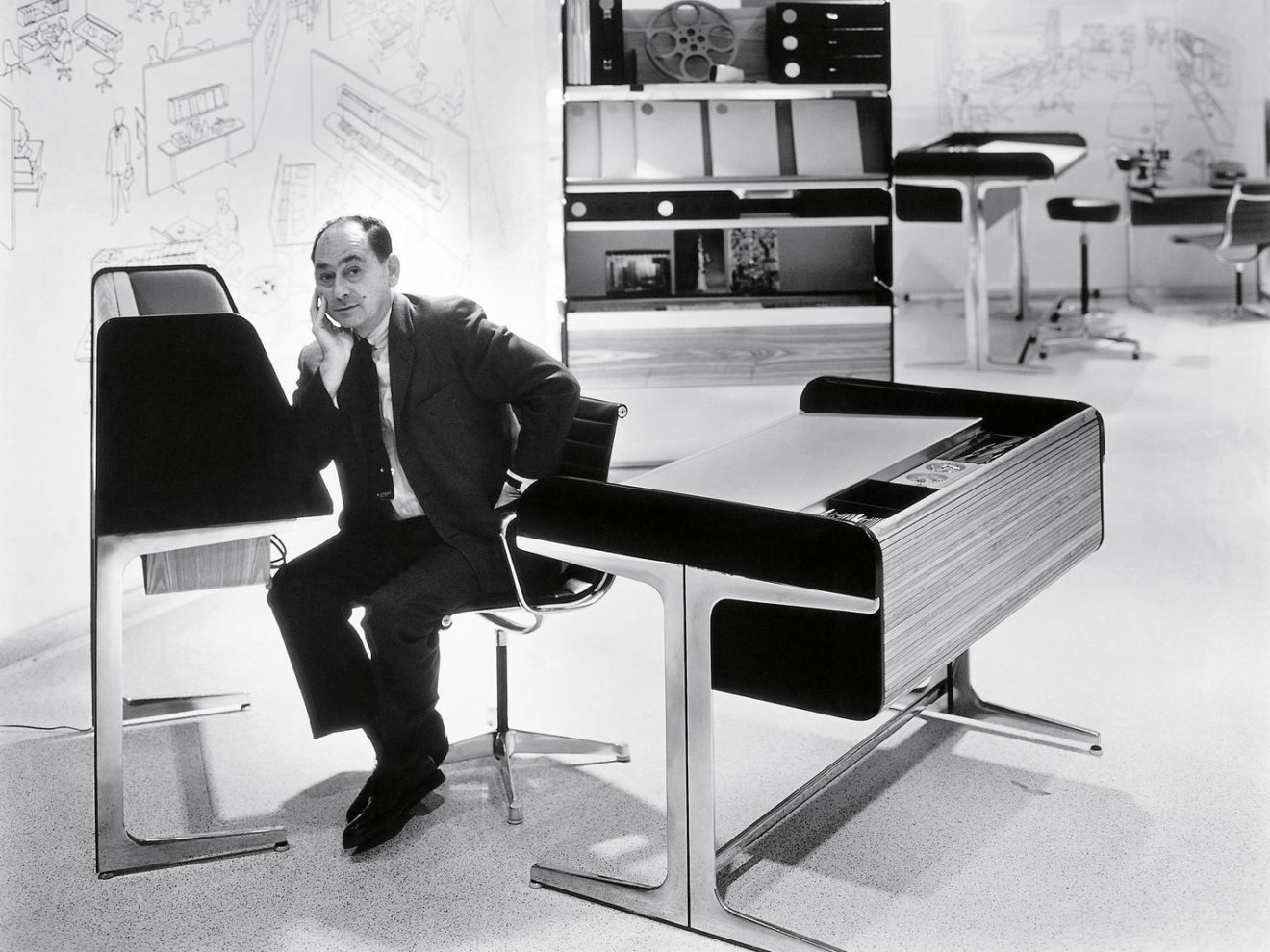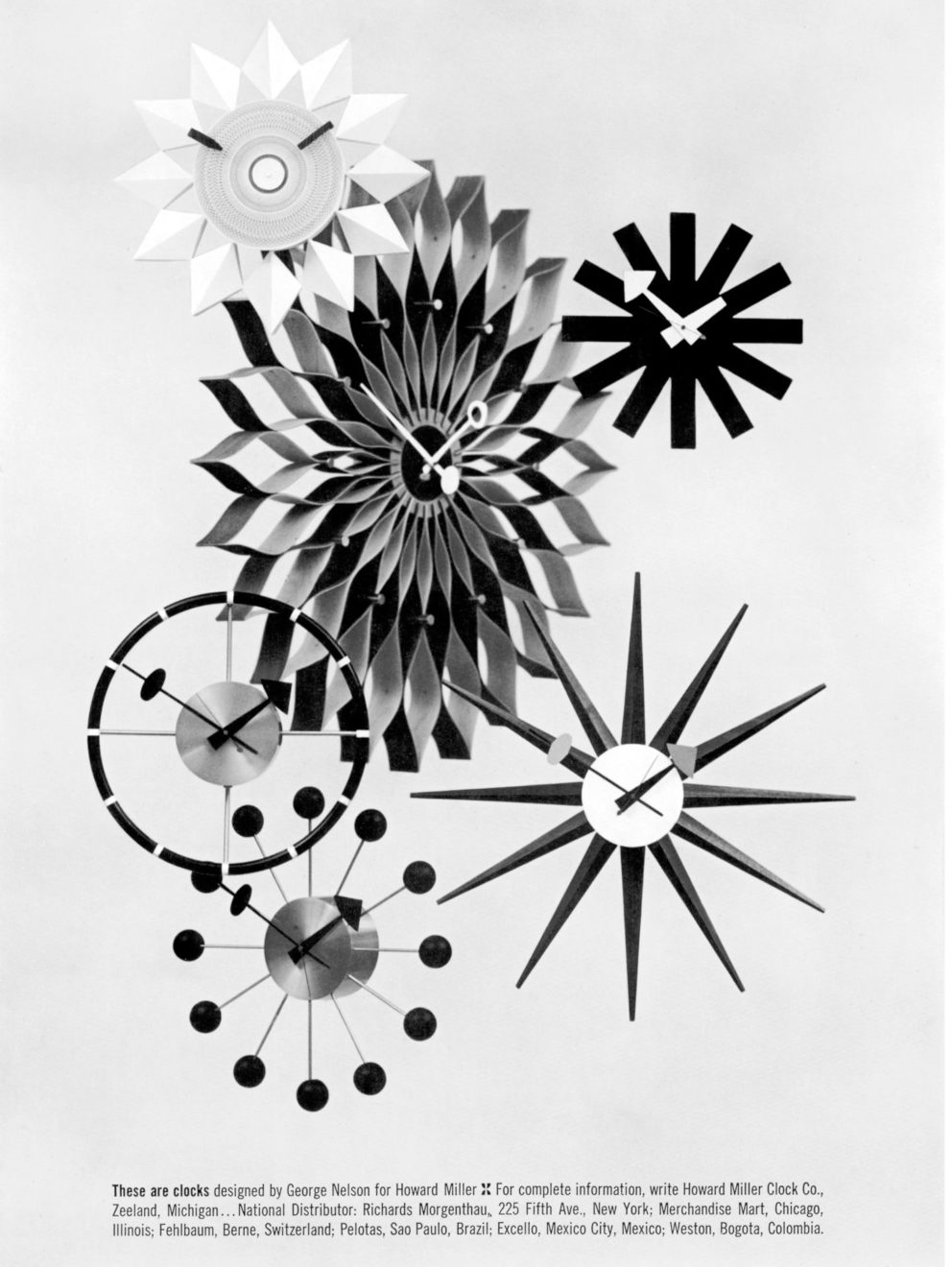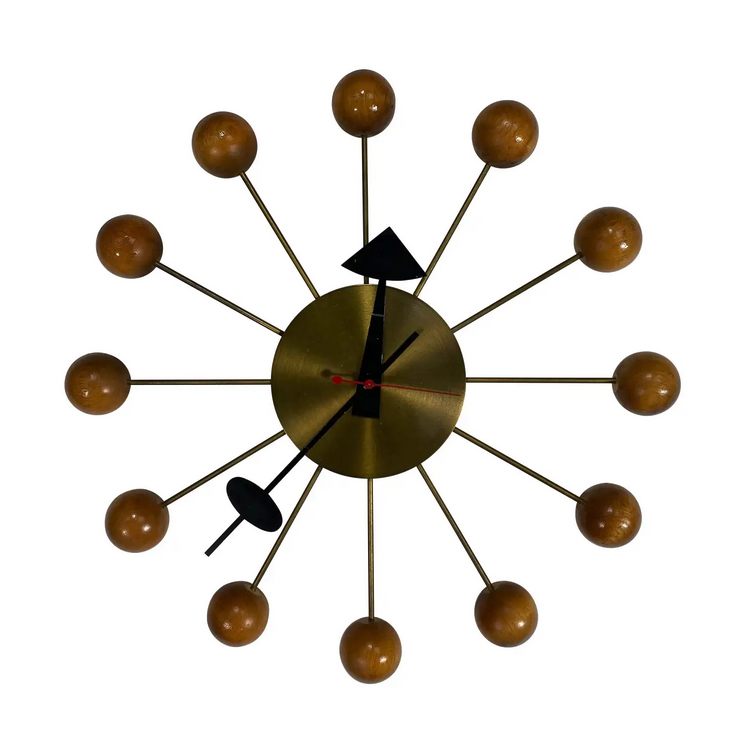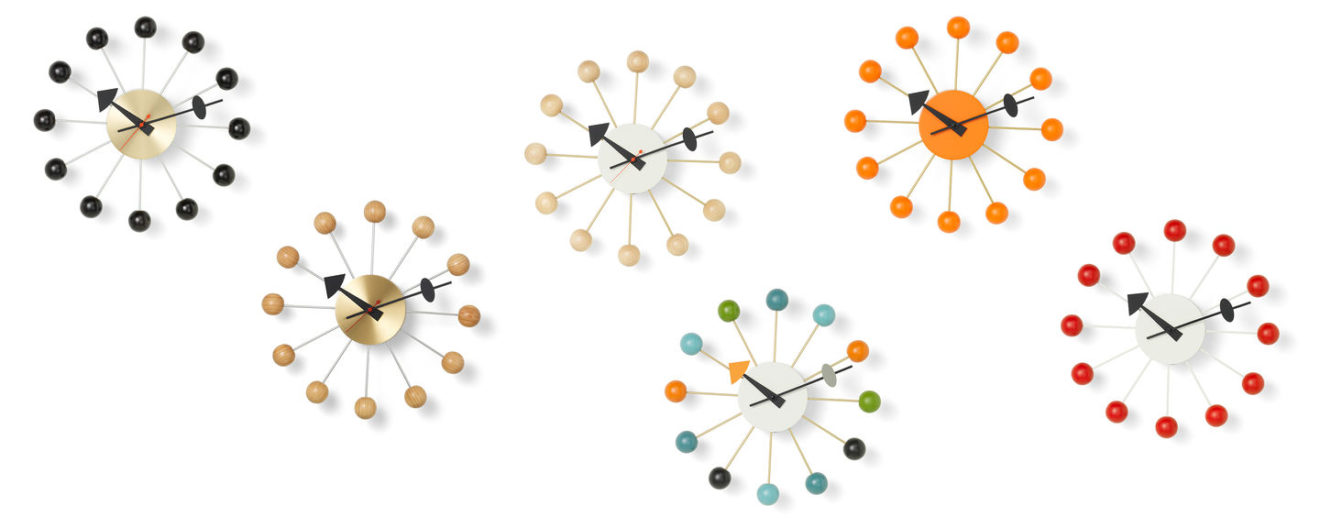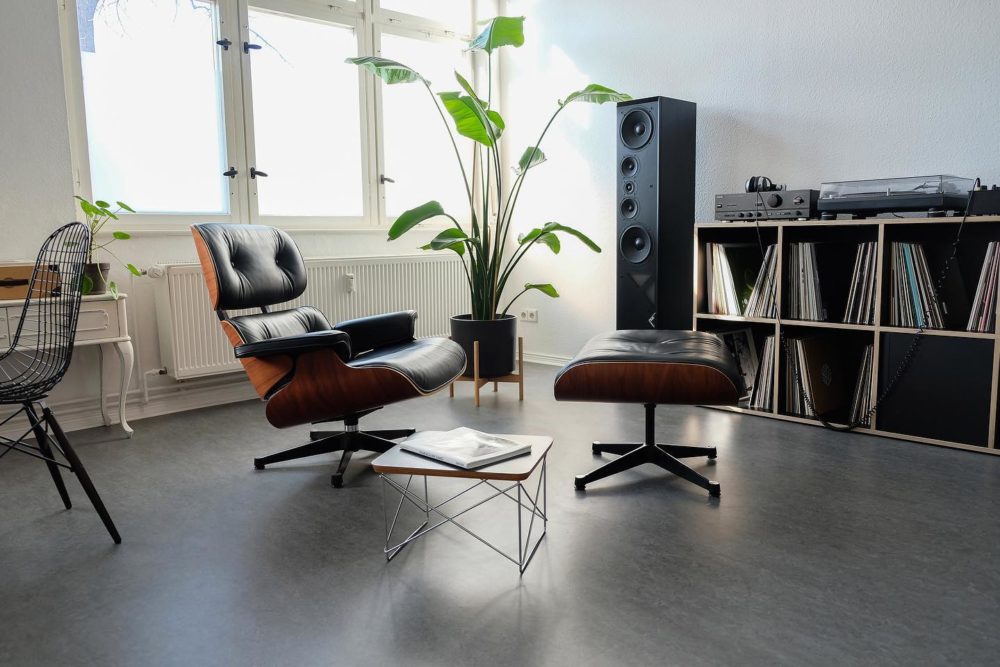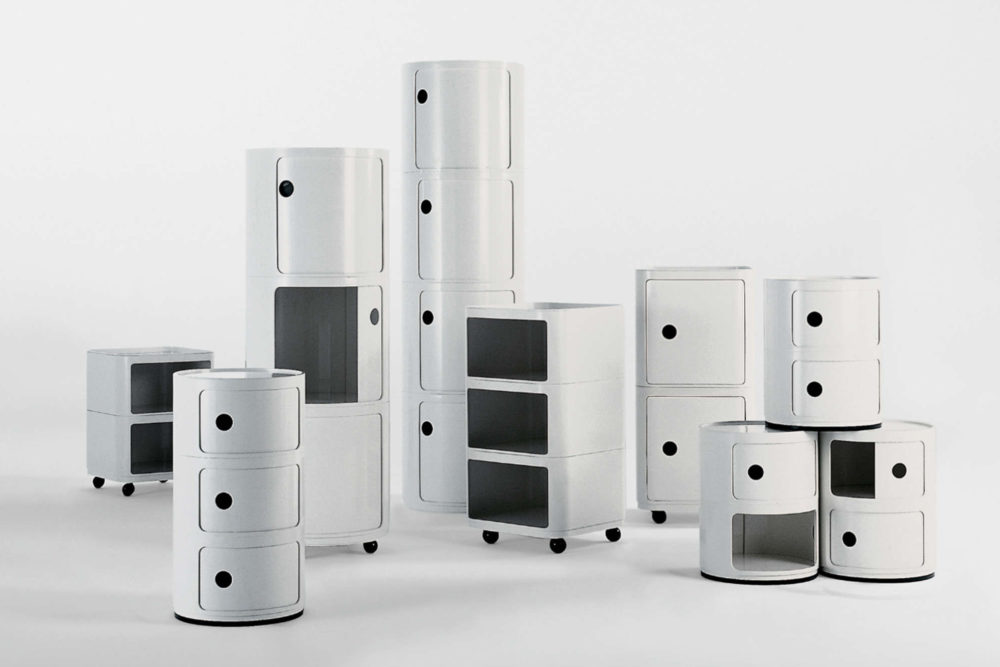George Nelson’s Ball Clock
A quintessential Modernist accessory, and widely regarded as an icon of mid-century modern design, George Nelson’s ball clock owes its original 1947 conception to four celebrated designers, a series of late-night scribbles in New York City, and a few bottles of wine.
American industrial designer, George Nelson, had been commissioned to create a series of clocks by the long-standing timepiece manufacturer Howard Miller Clock Co. Nelson based his clock designs around two important observations of the time; that numbers on a clock face were no longer necessary in order to read the time, and that the popularity of wrist watches meant that wall clocks could put aesthetic before function.
Nelson was working on this project after hours in his NYC studio along with fellow designer and friend, Irving Harper, when two more industry friends joined them – artist and landscape architect Isamu Noguchi and architect-inventor Richard Buckminster Fuller – and the clock sketching began.
Nelson recalls the evening unfolding in a 1953 interview: ‘Noguchi came by, and Bucky Fuller came by. He [Bucky] saw we were working on clocks and started making doodles. Then Bucky sort of brushed Isamu aside. He said, “This is a good way to do a clock” and he made some utterly absurd thing. Everybody was taking a crack at this, pushing each other aside and making scribbles. The next morning I came back, and here was this roll (of drafting paper), and Irving and I looked at it, and somewhere in this roll there was a ball clock.’
Whilst the ball clock continues to be known as ‘George Nelson’s’, it was actually Irving Harper who came up with the design, as George’s approach to accreditation was to credit the firm to the consumer, but the individual to the trade. As director of design at George Nelson Associates, Irving Harper created clocks that were also works of sculpture; ‘To omit numbers and have an abstract object that moved on the wall was something no one was doing at the time.’ He went on to design several clocks each year, which were passed on to Howard Miller Clock Co., who put many of the designs into manufacture.
Originally known as Model 4755, the ball clock was first launched on the market in 1949. It is comprised of a dozen metal spokes that radiate out from a circular centre, each with a wooden ball screwed to the end to mark the hour. Its unique and playful design reduces an everyday, essential item to its bare bones, challenging the viewer’s preconceptions of how a timepiece should appear, whilst incorporating cultural tropes of the time – the atom structure and the asterisk symbol were popular motifs in the USA following WWII.
George Nelson Associates and its designers would continue to conceive more than a hundred different clock models in the years that followed the ball clock’s launch. Vitra Design Museum acquired George Nelson’s archive after his death in 1986, which included around 7400 manuscripts, drawings, photographs and slides dating from 1924 to 1984. Vitra started to reissue the Nelson Clocks in 1999, and still continues to occasionally expand the collection with new pieces today.

